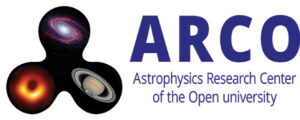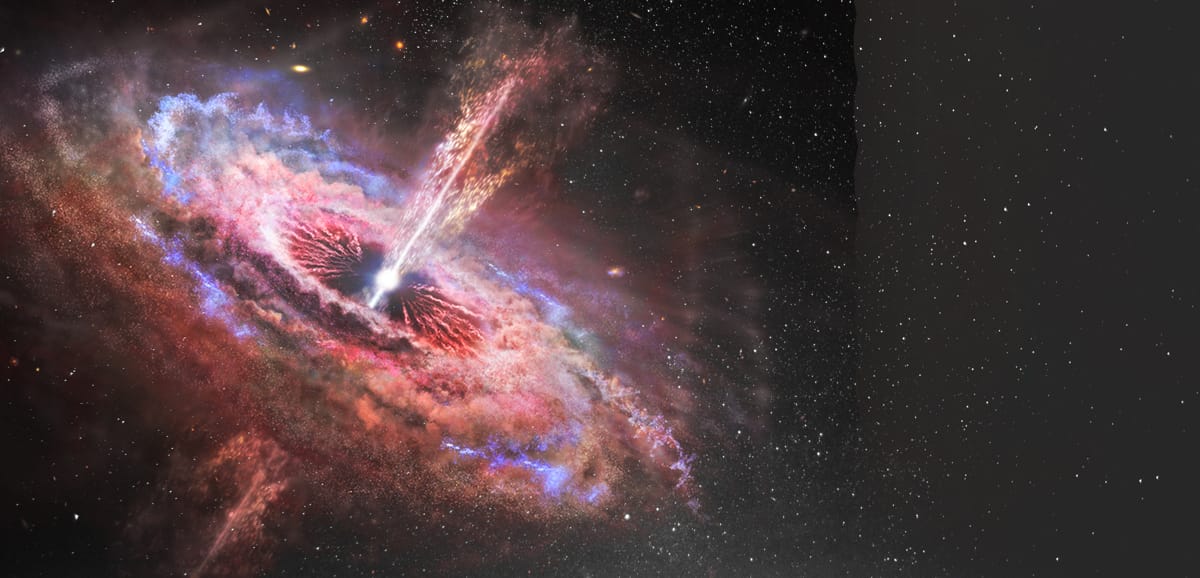Fast Radio Bursts (FRBs) are brief (typically lasting a few milliseconds), bright flashes of radio waves mostly arriving at Earth from distant galaxies. Some of the sources of FRBs have produced many observed bursts, while the majority have only been detected once so far. In one remarkable case in 2020, an FRB source was discovered in our own Galaxy. The source was identified as a known highly magnetized neutron star (called a ‘magnetar’). This has confirmed the working model, based on various less direct clues, that was held by the majority of astrophysicists studying FRBs at the time. However, the source of the Galactic FRB is much less active than some of the much more distant sources. It therefore remains unclear whether all FRBs arise from magnetars, and if so what conditions might cause a magnetar to produce such signals.
 In many bursts, it is possible to measure not only the intensity of the signal but also a property known as its polarization. The very large linear polarization fraction detected in various FRBs suggests that they are produced in strongly magnetized environments (and was one of the early indications towards a magnetar origin). However, other FRBs show a much-reduced fraction of linear polarization or a large fraction of circular polarization. How should these features be understood? Can one emission site and mechanism produce such a large variety of observable features?
In many bursts, it is possible to measure not only the intensity of the signal but also a property known as its polarization. The very large linear polarization fraction detected in various FRBs suggests that they are produced in strongly magnetized environments (and was one of the early indications towards a magnetar origin). However, other FRBs show a much-reduced fraction of linear polarization or a large fraction of circular polarization. How should these features be understood? Can one emission site and mechanism produce such a large variety of observable features?
As radio waves propagate, they can get deflected and scattered by turbulent and ionized material (plasma) within the interstellar medium. This is a well-known phenomenon that affects radio sources. It leads to a temporal broadening of the radio signal, to modulations in the spectrum (i.e. amount of radiation received per unit frequency) and, under certain condition, it can induce also temporal variability in the observed radiation. In a work from 2022, Dr. Beniamini and collaborators have shown that in addition to the effects mentioned above, the propagation through the plasma (if the medium is sufficiently magnetized), can also affect the observed polarization. It can naturally lead to significant induced circular polarization and/or can cause depolarization of the radiation, both of which are especially pronounced at lower frequencies. This propagation effect could explain the variety of observed behaviors in FRB polarizations, without requiring the emission mechanism to vary hugely from one burst to another. Indeed, the predictions of the model align nicely with observations of various FRBs with well-studied polarization properties. However, these provide only tentative evidence. A smoking gun of such a scenario would be the measurement of a large (and strongly time variable) value of the quantity known as the ‘rotation measure’, which measured the strength of the magnetic field through the column of plasma that the radiation has propagated through
In the meantime, one of the highly active repeating sources of FRB bursts, FRB 20190520B, was monitored in great detail by some of the largest radio telescopes on Earth, for a period of over seventeen months. This monitoring revealed fluctuating polarization properties, with a reduction of polarization at lower frequencies, and a very large rotation measure. Indeed, this rotation measure was fluctuating by a huge amount and has flipped its sign from positive to negative and vice versa during the observation period. These findings matched well the results of the work mentioned above, and in 2023 were published in a paper in Science by Dr. Beniamini and collaborators (see also Open University announcement). In the case of FRB 20190520B, the analysis reveals that the turbulent plasma is likely to be highly magnetized and to reside very close to the FRB source itself. The exact origin of this plasma is still an open question, and it might indicate a magnetized wind from a neutron star surface or an outflow from a binary companion of the object producing the FRB. Either way, this type of analysis presents a new way to constrain the nature of FRB sources and their surroundings and brings us one step closer towards deciphering the mysterious nature of FRBs.





